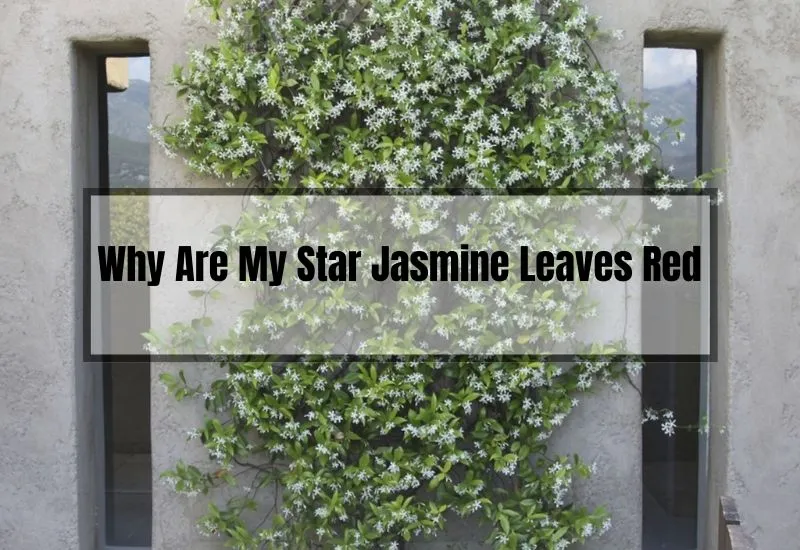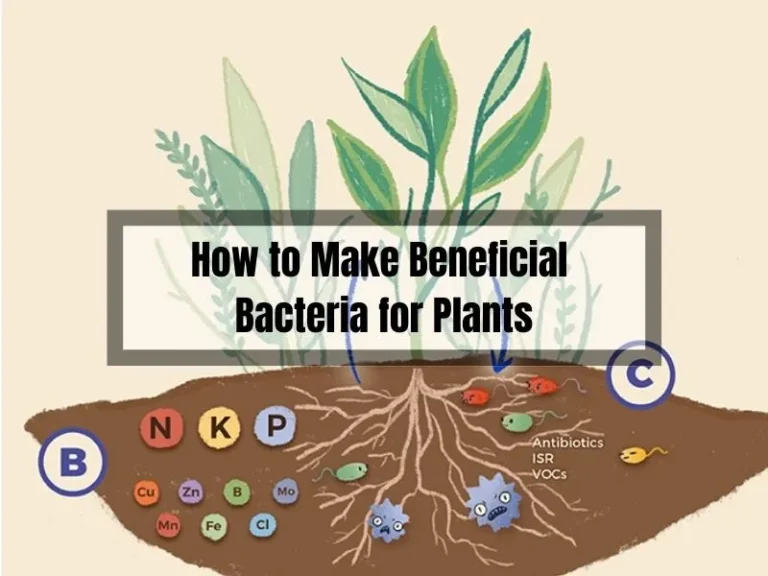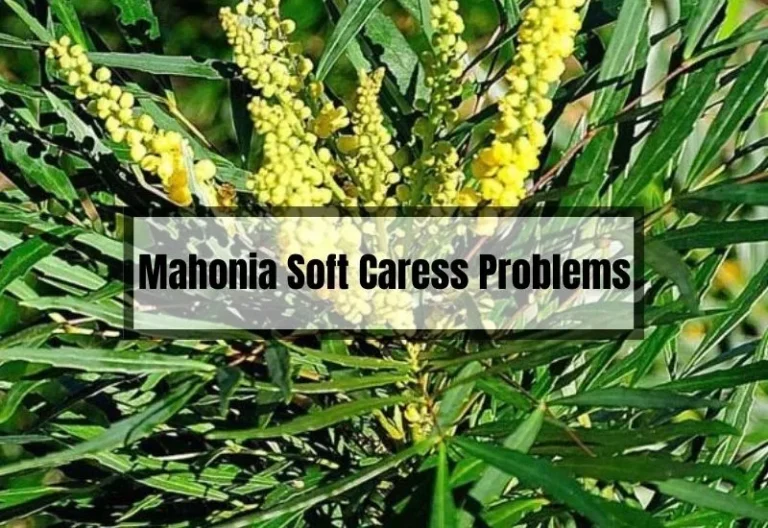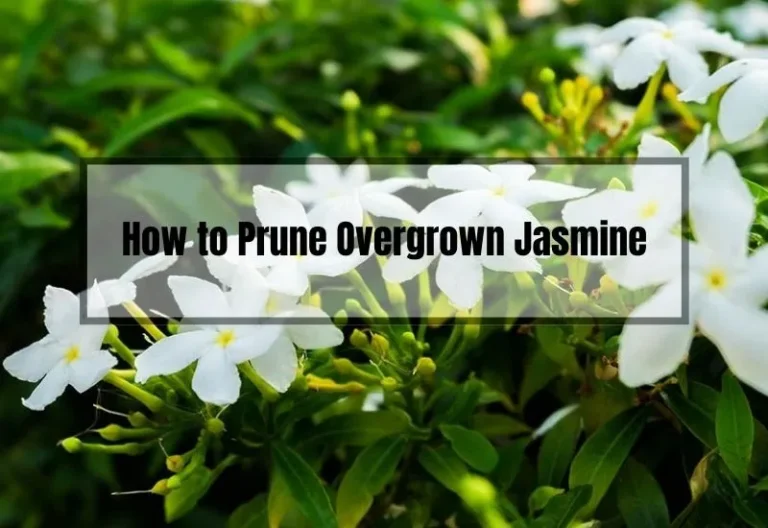Is Your Star Jasmine in Trouble? Here’s Why the Leaves Are Turning Red
Is your beloved star jasmine plant causing you stress with its sudden red leaves? Don’t worry, we’ve got your back! In this all-inclusive guide, we’ll take you through the most common causes of red leaves in star jasmine plants and provide you with practical solutions to keep your plant healthy and flourishing.
So, if you’re looking for answers to your star jasmine woes, sit back, relax, and let’s dive into the root of the problem together!

Why are My Star Jasmine Leaves Red?
1. Seasonal Changes
One possible reason for the red leaves on your star jasmine is completely natural and has to do with seasonal changes. During spring and fall, some types of jasmine naturally experience a shift in their foliage color. If this is the case, there’s no need to worry!
2. Normal Growth and Shedding of Leaves
As your star jasmine grows and develops, it’s normal for the older leaves to turn red and eventually fall off. This process allows the plant to focus its energy on producing fresh, new leaves.
As long as you notice a healthy growth of new leaves and the red ones are falling off as they should, everything is A-OK.
3. Water Stress
If the red leaves on your jasmine plant persist, water stress could be the culprit. Star jasmine doesn’t require copious amounts of water, but it doesn’t appreciate bone-dry soil either.
A good balance with well-draining soil is essential. Water stress can disrupt the plant’s phosphorus and sugar levels, leading to the formation of red pigmentation.
4. Impact on Phosphorus and Sugar
When water stress occurs, it interferes with the plant’s ability to absorb essential nutrients. This disturbance can cause an accumulation of sugar in the cell sap, which in turn, results in red pigmentation.
So, if your jasmine’s leaves are red, it might be time to take a closer look at your watering habits.
5. Common Nutrient Deficiencies Causing Red Leaves
Another factor that can cause the leaves of your star jasmine to turn red is nutrient deficiency. A lack of essential minerals like
- nitrogen (N)
- phosphorus (P)
- magnesium (Mg)
- potassium (K)
can result in a color change. Premature leaf senescence in the early season is often linked to nutrient deficiencies.
Signs of Phosphorus Deficiency
Phosphorus deficiency is typically indicated by red leaves on the lower, shorter branches of your jasmine plant. As mentioned earlier, this redness is a result of increased sugar levels in the cell sap.
The red pigmentation can manifest as spots or cover the entire leaf.
Causes of Stress in Star Jasmine Plants
Plant stress, such as underfeeding, overwatering, underwatering, or exposure to extreme temperatures, can also cause your star jasmine leaves to turn red.
It’s essential to be mindful of your plant’s needs and the environment in which it’s growing.
Impact on Leaf Color
Plant stress can affect the overall health and appearance of your star jasmine, including the color of its leaves.
If you suspect that your plant is stressed, it’s time to take action and provide it with the appropriate care.
How to Treat Star Jasmine’s Red Leaves
Normal Leaf Color Changes
As we’ve discussed, seasonal changes are a natural cause of red leaves in star jasmine plants. If this is the reason, there’s no need for concern. The leaves should return to their usual green hue as the season progresses.
Observing Plant Growth and Health
It’s important to keep an eye on your plant’s growth and overall health during these seasonal changes.
If the red leaves remain and there’s a lack of new growth, it’s time to investigate further and address the issue.
Protecting Star Jasmine From Frost
Extreme cold can be harmful to your star jasmine, causing the leaves to turn red and potentially leading to plant death.
If you live in an area with harsh winters, it’s crucial to protect your jasmine plant from frost.
Moving Plants Indoors During Winter
One effective way to shield your star jasmine from the cold is to transfer it into a pot and bring it indoors during the winter months. Keeping it in a warmer environment can help maintain its health and prevent leaf discoloration.
Overwatering Issues
Overwatering is a common problem for many plants, including star jasmine. If the top of the soil appears greenish (due to algae) and the soil is overly compressed, you might be overwatering your plant.
To address this issue, turn the soil over with a shovel and consider improving the drainage system to remove excess water.
Underwatering Issues
Underwatering can also lead to red leaves on your star jasmine. To resolve this problem, adjust your watering schedule to match the plant’s needs. Generally, water your plant three times a week during spring and fall, once a week during winter, and every two days during summer.
If you live in an exceptionally hot region, daily watering might be necessary in the summer.
Adjusting Watering Schedule Based on the Season
Keeping your star jasmine adequately hydrated is vital for its health and appearance. Adjust your watering schedule based on the season and your region’s climate to ensure your plant gets the water it needs without causing stress.
Providing Necessary Minerals
Ensuring your star jasmine has access to essential nutrients is crucial for its well-being. Supplying the necessary minerals will help prevent leaf discoloration and other issues related to nutrient deficiencies.
Using Seaweed and other Nutrient-rich Solutions
One way to provide your star jasmine with the nutrients it needs is by using seaweed or other nutrient-rich solutions available at your local nursery. Feeding your plant with these supplements can promote healthy growth and prevent red leaves.
Frequently Asked Questions (FAQs)
Is red foliage a problem for all jasmine plants?
Not necessarily. Some jasmine plants naturally experience red foliage during seasonal changes, and it’s not a cause for concern. However, if the red leaves persist or are accompanied by other issues, it’s essential to investigate and address the problem.
How can I tell if my star jasmine has a nutrient deficiency?
Signs of nutrient deficiency in star jasmine plants can include red leaves, stunted growth, and poor overall health. If you suspect a nutrient deficiency, consult with a local nursery or gardening expert for advice on addressing the issue.
Can jasmine plants recover from water stress or nutrient deficiency?
Yes, jasmine plants can recover from water stress and nutrient deficiencies if you promptly address the issue and provide the necessary care. Adjusting your watering schedule, improving soil drainage, and supplementing with essential nutrients can help your plant bounce back.
What type of soil is best for growing star jasmine?
Star jasmine thrives in rich, well-draining soil. Ensure that your plant has access to the necessary nutrients and that the soil drains well to prevent water stress and other issues.
Conclusion
In summary, the main causes of red leaves in star jasmine plants are natural seasonal changes, water stress, nutrient deficiencies, and plant stress. To maintain a healthy and vibrant star jasmine,
be mindful of its needs and provide the appropriate care based on your region’s climate and seasonal changes.
Related Posts:






